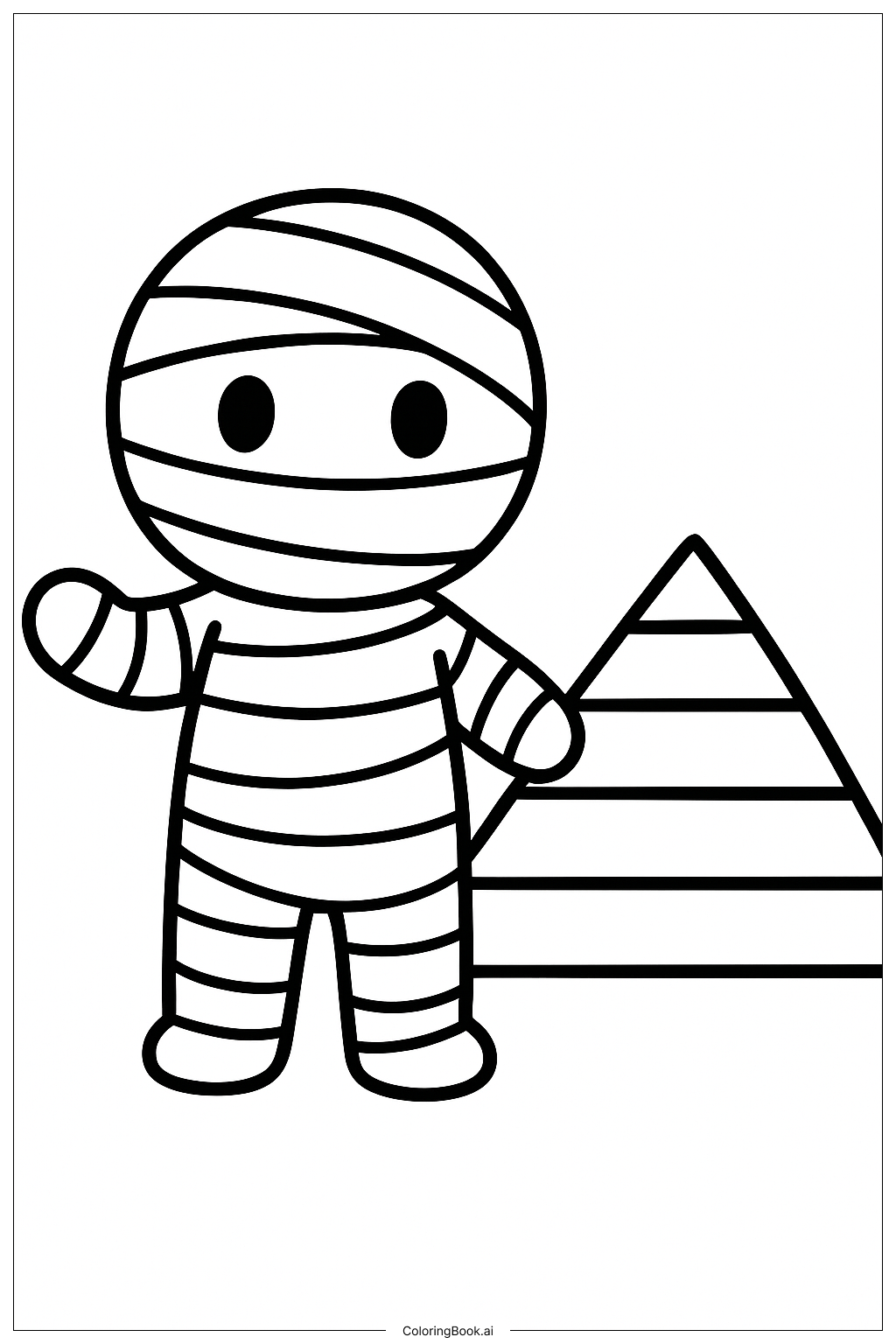Coloring tips: How to color Mummy And A Small Pyramid coloring page well?
Use light and warm colors for the mummy’s bandages, like beige, cream, or light brown, to create a classic mummy look. You can add some darker shades to show the wrapped layers. For the eyes, color them black or dark brown to make them stand out. The pyramid can be colored in yellow, gold, or sandy shades that resemble desert sand or ancient stones. You may also use a gradient effect or alternate colors in the pyramid sections to make it more interesting. Background colors can be light blue or soft orange to represent the sky during the day or sunset. Feel free to add your own creative colors to make this scene unique and fun!
Coloring challenges: Which parts are difficult to color and need attention for Mummy And A Small Pyramid coloring page?
1. The many small strips on the mummy can be tricky to color without going outside the lines. Children need patience to stay neat. 2. The pyramid’s horizontal sections require careful coloring to keep each layer distinct and avoid colors mixing. 3. Coloring the mummy’s round eyes requires precision to keep the circle shape perfect. 4. Balancing light and dark shades on the mummy to show its 3D wrapped texture can be difficult. 5. Choosing suitable background colors without clashing with the mummy and pyramid colors may challenge young artists.
Benefits of coloring books: Advantages of drawing Mummy And A Small Pyramid coloring page
This coloring page helps children practice fine motor skills by coloring inside narrow strips on the mummy and sections of the pyramid. It encourages attention to detail and patience. The simple shapes make it accessible to young children while still offering a fun challenge. Coloring the mummy and pyramid also introduces kids to Egyptian culture in an enjoyable way. This activity supports creativity as kids decide what colors to use, and it can boost confidence when they complete the picture. Overall, it is a fun and educational coloring experience.
